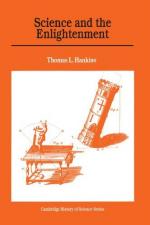
|
| Name: _________________________ | Period: ___________________ |
This quiz consists of 5 multiple choice and 5 short answer questions through Chapter 2, Mathematics and the Exact Sciences.
Multiple Choice Questions
1. Throughout the Enlightenment, reason was usually extolled in the same breath with ________, the other key word of the Enlightenment.
(a) Nature.
(b) Nuture.
(c) Religion.
(d) Science.
2. According to Chapter 1, who made Newton into a supreme rationalist whose laws of motion were a priori deductions of pure thought?
(a) Roberts.
(b) Marquis de l'Hopital.
(c) Fontenelle.
(d) Maupertuis.
3. Who came out in support of vis viva in 1722 and concluded that "what was before only a dispute of words now becomes a dispute about real things"?
(a) Voltaire.
(b) 'sGravesande.
(c) Galileo Galilei.
(d) Musschenbroek.
4. Chapter 1 states that the "geometric spirit" noted by ________ ensured that the same progress would occur in our knowledge about nature.
(a) Boyle.
(b) Locke.
(c) Newton.
(d) Fontenelle.
5. Chapter 2 reveals that Leibniz wrote the "second difference" in calculus as ________.
(a) R6Z.
(b) A3E.
(c) D2X.
(d) B3C.
Short Answer Questions
1. Which German metaphysician, when asked in 1785 if he believed he lived in an enlightened age, answered, "No, we are living in an age of enlightenment."
2. Who was the extraordinary philosopher whose life and career exemplified many aspects of the Enlightenment, although he was not especially prominent as a natural philosopher nor was he the main protagonist in the vis viva controversy?
3. Who became the leading literary figure of the Enlightenment and in 1734 published "Philosophical Letters"?
4. In Chapter 2, what was the name of the shape of a chain suspended between two fixed points?
5. What was the name of the philosopher who had a passion for humanity, a desire to "do good," and a penchant for reform, according to Chapter 1?
|
This section contains 266 words (approx. 1 page at 300 words per page) |

|




